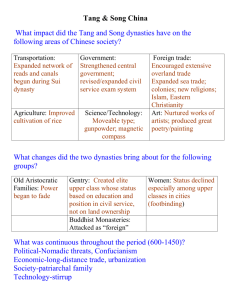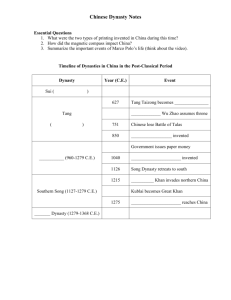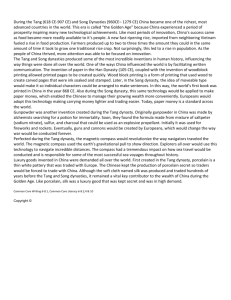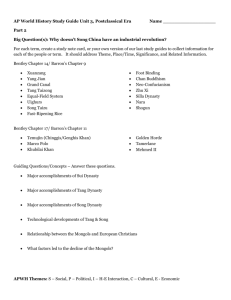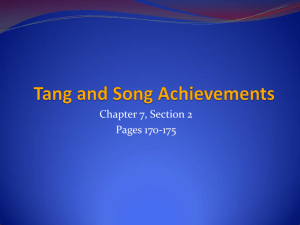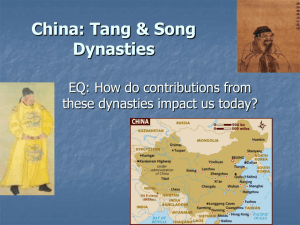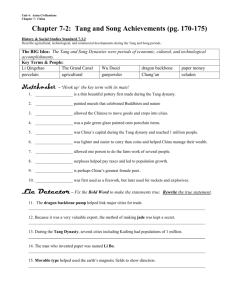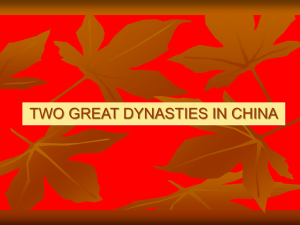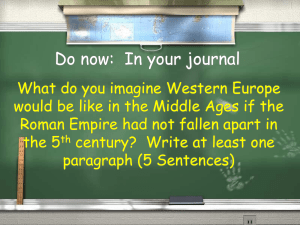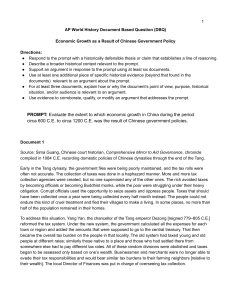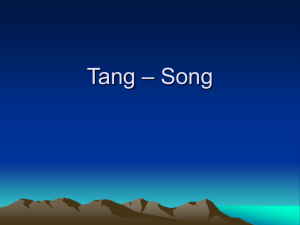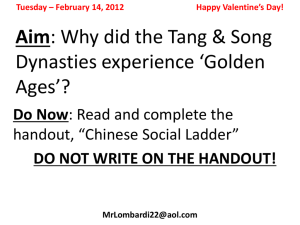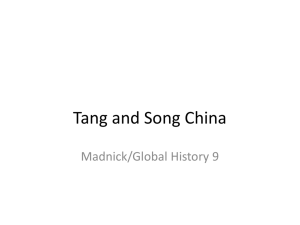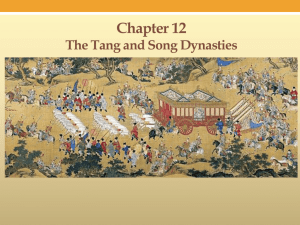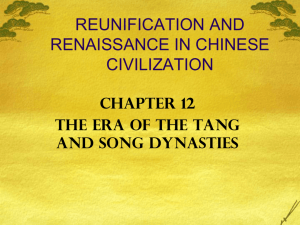Document
advertisement
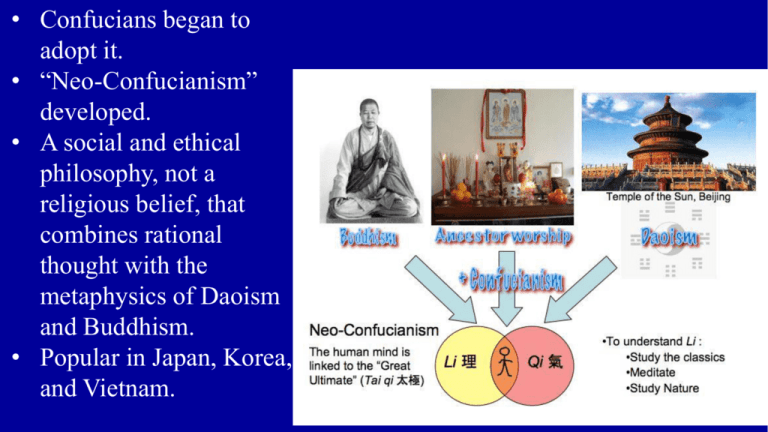
• Confucians began to adopt it. • “Neo-Confucianism” developed. • A social and ethical philosophy, not a religious belief, that combines rational thought with the metaphysics of Daoism and Buddhism. • Popular in Japan, Korea, and Vietnam. • Developed the system of printing in the 7th century. • “wood-block printing”, carved blocks of wood that were inked and pressed against paper. • The invention of printing was linked with the spread of Buddhism, through written text. • Landscape painting flourished during this period. Based on Daoism’s emphasis on nature. • Masculine identity came to be defined in terms of painting, calligraphy, scholarship, and poetry. • Expanded good paying bureaucratic job, which made education important in Chinese culture. • Needed to pass extremely rigorous civil service examination. • Serving in the bureaucracy was highly respected. • • • • Song China had growing urban centers. Hangzhou was home to one million people. The cultural center of southern China. Trade brought diversity, including a thriving community of Arabs. • Developed a process of converting coal to coke. • Coke has fewer impurities than in coal. • Chinese could make metal that was stronger, leading to better plows, weapons, and bridges. • Discovered gunpowder in the 9th century. • Technology spread along the Silk Road. • Triggered the development of cannons in Europe. • • • • Tang: Introduced the “equal-field system” (8th century). Ensure that all families had land to cultivate. Wanted to take control away from the landed aristocracy. The aristocracy bribed government officials to keep their land. • Agricultural Improvements: 1. Used manure (human and animal) to enrich the soil. 2. Built irrigation systems; ditches, water wheels, pumps, and terraces. 3. New heavy plows pulled by water buffalo or oxen allowed unusable land to be cultivated. • • • • Fast-ripening rice (champa rice) added to surpluses. Native to northern Vietnam. Allowed farmers to grow two crops a year. Contributed to the doubling of the Chinese population during the Tang and Song dynasties • • • Did away with government labor tax. Paid people to work on public projects. Increased money in circulation, promoting economic growth. • Global trade declined after collapse of the Roman and Han Empires. • Arab merchants from the Abbasid Empire revived the land and sea routes of the Silk Road. • 1. 2. 3. 4. 5. 6. 7. Technology/trade items from China: Compass Paper Printing Gunpowder Porcelain Tea Silk • Developed a new financial system. • Merchants deposited “paper money” in one location and withdraw the same amount at another location. • Abacuses were used to calculate transactions. • System became the model for the modern banking system. • The transformation of southern China from a subsistence economy to an export-oriented economy was due to the Indian Ocean trade. • Song China went through “proto-industrialization,” meaning a phase that precedes and enables full industrialization. • Two goods led the way; porcelain and silk. • • Urban areas grew in prominence. Song Dynasty was the most urban civilization in the world. • Expanding the bureaucracy opened up well-paying jobs to lower class men. • Created new social class, the “scholar gentry.” • Educated in Confucian philosophy, they became the most influential social class in China. • Scholar gentry considered merchants the lowest class. • Didn’t produce anything. • Simply profited from the exchange of others’ labor. • Women’s lives were more restricted in the Song dynasty than in the Tang dynasty due to the revival of Confucianism. • Small feet was a sign of beauty. • “Foot binding”, a girl had feet tightly wrapped, to deform bones. • A social status, not prevalent among peasants. That concludes Song and Tang Dynasties. Any questions before the quiz on the next slide?
